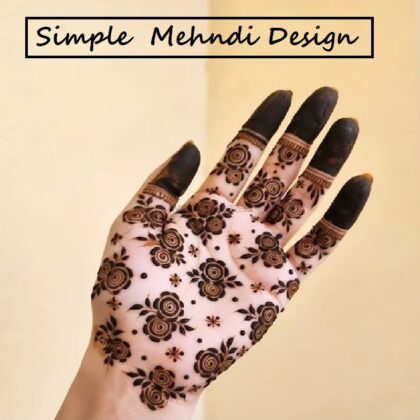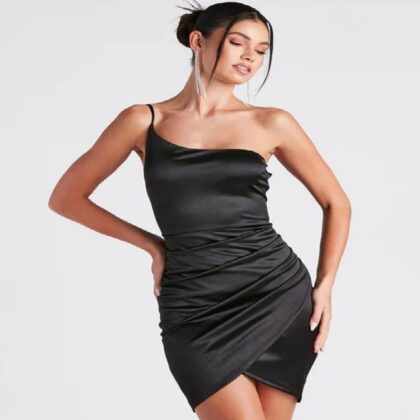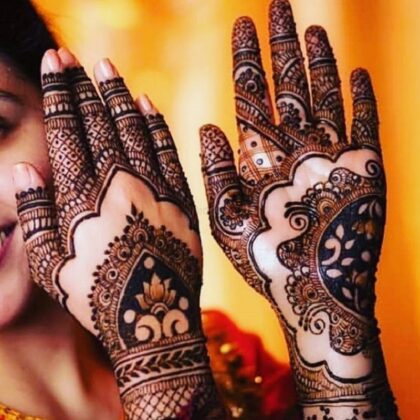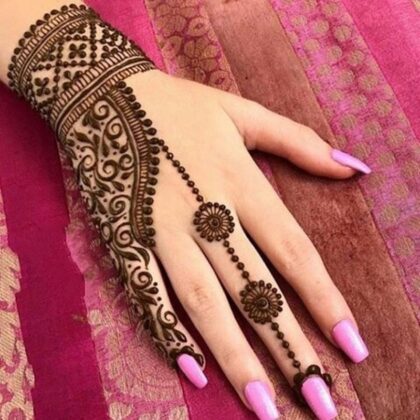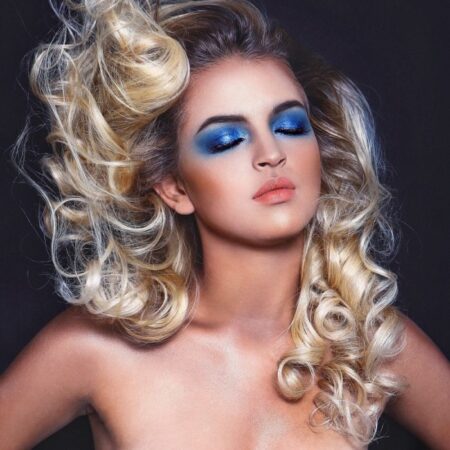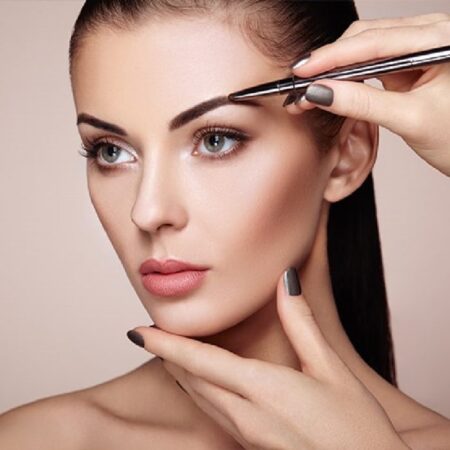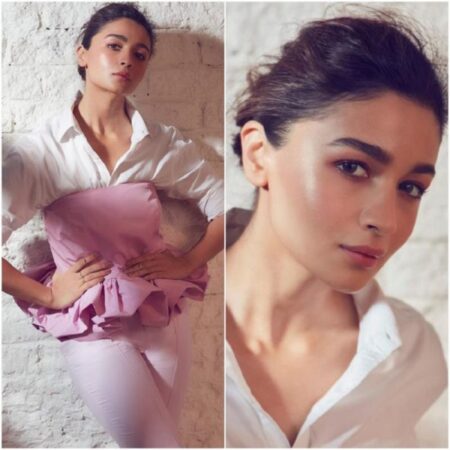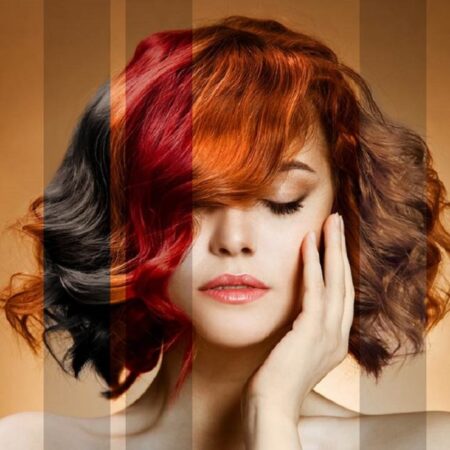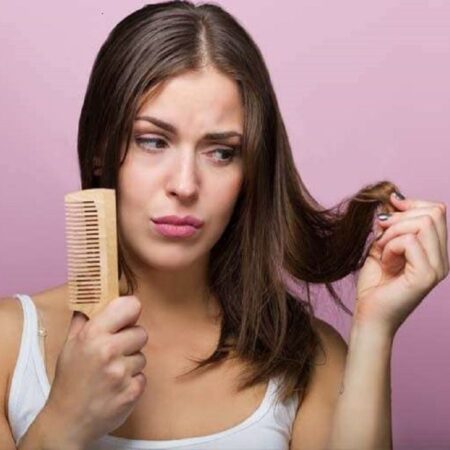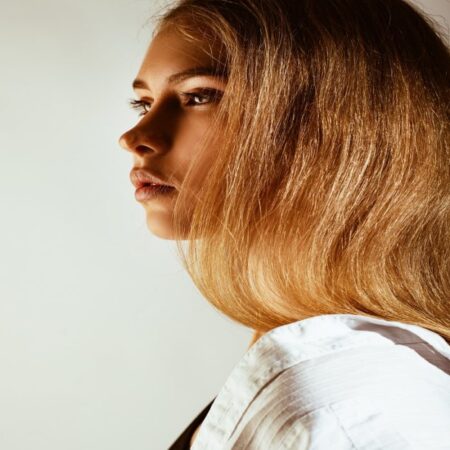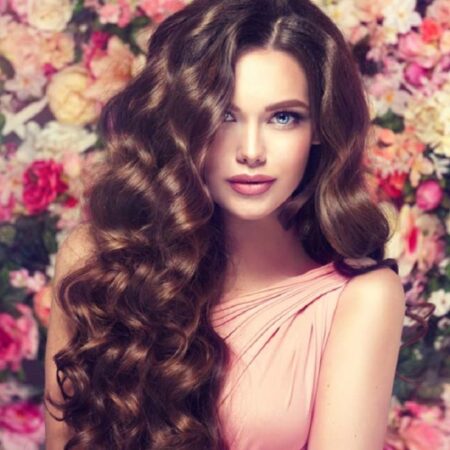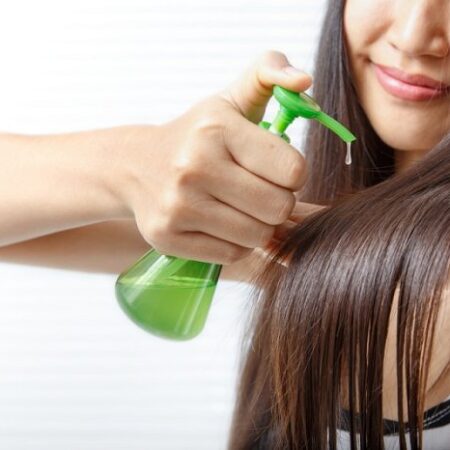
Who doesn’t love long, beautiful, shining, and straight hair? Permanent hair straightening is one of the methods to achieve this. But before you opt for this method, it is important to understand how it works, how much it costs, and the pros and cons.
What Is Permanent Hair Straightening?
Permanent hair straightening removes your wavy curls permanently using chemical treatments to give you straight flowing hair without using a styler daily.
Though there are several ways of doing this, the following two steps are integral to this process:
a. Salons first use a sodium-based product on your hair to break the keratin structure and make it more manageable.
b. Secondly, an oxidant that helps to neutralize the keratin action is added to set the fibers of your hair in the desired shape.
How Much Does Permanent Hair Straightening Cost?
It usually costs around Rs.$150 – $1000 based on the salon and the brand. While Loreal treatments may be costly, they usually last longer.
Types Of Permanent Hair Straightening
Permanent hair straightening is of different types, depending on the technique involved. They give you the same silky straight locks but just in different ways:
- Keratin treatment
- Japanese straightening (thermal reconditioning)
- Chemically straightened hair
- Hair rebonding
(a) Keratin Treatment Or The Brazillian Straightening Technique
The Brazilian blowout or keratin treatment was created in Brazil in the early 2000s. It used formaldehyde to straighten hair (1).
What Is Keratin?
Keratin is the natural protein in our hair. It is also present in our teeth and nails. It keeps the hair straight and shiny. As the protein content decreases with an unbalanced diet and age, keratin levels will decrease. Consequently, your hair becomes frizzy, tangled, and dry. You need to replace the protein content in your hair to get sleek hair. The Brazilian blowout is a treatment based on this process.
This treatment involves coating keratin on your hair shaft, which leaves you with silky straight hair. While most hair straightening techniques, especially the permanent ones, are damaging to your hair in the long run, this technique is a lot safer. The keratin reduces the frizz and makes your hair straight. It is also a lot safer to use on chemically treated and even damaged hair. The treatment will take a maximum of two hours to finish.
It does not use strong chemicals to open and close the hair cuticle in an effort to straighten it. Keratin is a natural substance which constitutes 88% of your hair. After applying a keratin solution to the hair, a 450-degree flat iron is used to seal the formula into all of the strands of your hair. This creates a moisture barrier, which reduces frizz and curls while promoting a shiny look.
While most people call this permanent, the truth is that it only lasts for a maximum of 6 months. The advantage, however, is that the hair comes back to its original structure gradually. This can also be done repeatedly with no worries.
Pros Of Keratin Hair Straightening Treatment
- This hair treatment is safe.
- It makes hair super soft and silky.
- It makes hair shiny, sleek, and manageable.
- It is suitable for all hair types.
- The treatment claims to have no side effects.
- It is suitable for both men and women.
- It obviates the need for chemical hair products like sprays and mousse. It is a replacement of keratin protein on hair that gives very good results.
- This treatment provides extra protection from the sun and pollution and also repairs the damaged hair cuticles. In the first week after the keratin hair straightening treatment, the hair may look a little dull because of too much keratin build-up. But not to worry, the final results, once the treatment has settled, are worth it.
Cons Of Keratin Hair Straightening Treatment
- It is an expensive treatment. Research all your options before investing in this treatment.
- Pregnant women should not go for this hair treatment. The products used for straightening may emit some gases, which are not suitable for pregnant women. Avoid any chemical hair treatments during pregnancy as they may contain formaldehyde.
- You need to use sodium chloride-free shampoos and conditioners for washing and maintaining your hair after the treatment.
- You will end up spending more money and effort in managing chemically treated hair
- You will need well-trained hairstylists for better results, increasing treatment costs.
- Chemically treated hair is prone to hair breakage and hair loss. This is not unique to this treatment. Perms and coloring also lead to the same results. Take good care of your hair with leave-in conditioners.
- There is always a chance of allergic reactions. Hence, opt for genuine products at a reputed salon. Insist on a patch test to rule out any after-effects like rashes, itching, etc.
Some shampoos contain keratin for better aftercare:
These shampoos are helpful in maintaining the results after keratin hair protein treatment.
A few tips to keep in mind for this treatment:
- Take care to protect your eyes and skin while undergoing this treatment
- Avoid repeating chemical hair treatments frequently. After treatment, give your hair some rest. Do not attempt another chemical treatment for the next 6-8 months. If you repeat these hair treatments aggressively, it will result in extensive hair damage. Let your hair grow back.
Approximate Price: Starts between $150-$600. It increases based on hair length.
(b) Japanese Straightening Or Thermal Reconditioning
This is a technique that employs both chemicals and heat. Hence, you should discuss this thoroughly before committing to it.
The Japanese hair straightening procedure was primarily started in Japan as a smoothing plus conditioning treatment and promotes permanent alteration in the structure of the hair. In this procedure, the cysteine protein bond of hair gets loosened and is reshaped by the straightening of hair cells.
In this procedure, a chemical is applied for about 15 to 20 minutes to break the bonds of the hair. After this, the hair is subjected to extreme heat to restructure the bonds into a straight hair type. This is then again treated with chemicals to lock in the bonds and protect the hair.
The entire procedure of Japanese hair straightening involves numerous steps that vary as per the length and texture of your hair. It is generally a long and time-consuming procedure that takes no less than 6 to 8 hours, depending on the length of your hair. That’s not all; the Japanese hair straightening technique requires another hour or so for the next follow-up session after three days of getting the treatment done. This straightening lasts for at least 6 or 7 months.
However, this technique does not have 100% results. You need to have the right hair type for this to work. It is also important to keep in mind that this procedure is not done on hair that has been subject to chemical treatments before. Also, this can be done in many different ways, meaning the chemicals employed vary, and it is best to discuss it with a specialist at length before deciding on which one you want to go with.
Things To Consider Before Japanese Permanent Straightening
Japanese hair straightening, no doubt, is a great styling option for styling, but you need to consider some factors before getting it done:
- Once you get your hair straightened permanently, you cannot try different looks, such as curls, as this may cause damage to your newly treated hair. Hence, if you are fond of trying new looks all the time, avoid this method.
- Avoid straightening if your hair has undergone any intensive chemical treatments, such as coloring and bleaching, as it may be prone to a great amount of damage. There are chances that your scalp may get irritated, resulting in immense hair loss. Therefore, do a strand test to see how your hair reacts to chemicals.
- Your hair type is the most important factor to be considered before Japanese hair straightening. If you have African curls, this method is not recommended because strong chemicals can be devastating for such delicate tresses. Also, the treatment exposes the hair to heat for a longer duration, which can cause lots of damage to the hair. African hair can be straightened using hair relaxing treatment, which is far gentler on the mane.
- Make sure that your hair is protected from the sun and properly moisturized. Hence, treat your newly straightened hair with deep conditioning masks on a regular basis. If you want to color your hair, you will have to wait for at least one to two months after the treatment.
- Some experts claim that the Japanese hair straightening treatment is not harmful. However, you need to remember that any procedure that has the potential to alter your hair’s natural structure cannot be safe.
- Last, but not the least, get this treatment done by an experienced stylist if you don’t want to have any awful experiences.
Approximate Price: Starts between $250-$600. It increases based on hair length
(c) Chemical Straightening
This is also known as the hair relaxing technique. With this technique, it is all about breaking the protein bonds in the hair. When the right number of bonds are broken, curly or wavy hair becomes straight. This is the principle behind it. This, however, needs the professional to be very careful and also experienced in this matter.
You need to test to see the right combination because if too many bonds are broken, your hair will go limp. At the same time, if the sufficient number isn’t broken, the hair doesn’t straighten out. Hence, this is a fairly tricky procedure to opt for.
Permanent straightening is a very expensive procedure, of course, and that is why companies have come up with so many at-home kits for it! The market for permanent hair straightening products at home is quite big. While these kits don’t give bad results, keep in mind that this is a very precisely timed process, and mistakes can be very dangerous. At a salon, you will get customized and experienced care, which you can’t give yourself. Think about it well before you decide.
Things To Consider Before Chemical Straightening
- The nature of the relaxing formula to be used depends on the hair that has to be treated.
- Hair straightening treatments will weaken the hair. This is the result of breaking the bonds, which is necessary to relax the curls. Great care must be taken in the first application and particularly in touch-up applications. Overlapping too much onto previously relaxed hair can result in excessive breakage.
- This is another reason to leave this one to a professional and experienced hairdresser.
- It is well worth the money and not worth the risk of doing irreversible damage to the hair by attempting straightening with a relaxer at home.
Approximate Price: Starts between $75-$150. It increases based on hair length.
(d) Hair Rebonding
The rebonding treatment is a boon for women who have problems taming their wavy, dense, or “large” hair. Hair that is decently rebonded will keep its fluency for a lengthy period. It is simply in the original hair or regrowth region where curls or waves will be seen. Popular though rebonding may be, the fact remains that hair that has been rebonded or straightened several times or too previously colored remains weak at its roots. Rebonding will require much maintenance and security during the next rebonding or straightening handling because of its sensitized and fragile state.
Rebonding is a chemical hair treatment that makes your hair straight, sleek, and shiny. It is a permanent and expensive procedure. Prices for the treatment may vary across salons due to products used, service, your hair type, and post-treatment care.
Each type of hair has a natural bond. Curly or wavy types are the results of natural bonds that give the hair its physical quality. The cream softener or relaxant used in the rebonding treatment breaks the hair structure. A neutralizer bonds the structure again and makes hair straight. In simpler terms, the rebonding treatment changes your natural hair structure.
Various do-it-yourself kits are available for these treatments, and you can opt for these if you have experience in permanent hair straightening at home.
Remember that chemicals weaken the hair and hence need more care and attention. Opt for homemade hair masks, such as banana and avocado mask, and pamper your hair with hot oil treatments.
Approximate Price: Starts between $150-$300. It increases based on hair length.
Side Effects Of Permanent Hair Straightening
- You get a mix of straight and curly hair when the hair is growing.
- The process needs repetition to retain the look.
- It can cause excessive dryness and frizziness.
- It can cause itchy scalp, dandruff, and other related problems.
- It can damage the hair texture.
- It can lead to hair fall, split ends, and loss of natural shine.
Major Side Effects Of Hair Straightening
While hair straightening is a widely known practice, little is known about its side effects. Here are some side effects concerning permanent hair straightening:
- The chemical relaxers may not be applied on the scalp as they can cause skin burn.
- The chemicals facilitate permanent hair straightening, but if applied with the wrong technique, they may cause scalp burns and hair breakage.
- Hair is sensitive to pH value changes, and alkaline solutions swell the fibers and open the cuticle scales. This can make the hair susceptible to friction, lowering its resistance and strength.
- In a study, the most common adverse effects reported after permanent hair straightening were frizzy hair in 67%, dandruff in 61%, hair loss in 47%, thinning and weakening of hair in 40%, graying of hair 22%, and split ends in 17% (1).
Major Side Effects Of Hair Smoothing And Japanese Treatment
A study done in Saudi Arabia showed that about 70% of 1093 women didn’t know that the BKT treatment used formaldehyde releasers (2). Here are the side effects of this treatment you need to know about:
- Ever since its invention, every salon in Brazil was performing the Brazilian Keratin Treatment ( BKT). Consumers complained of burning eyes, strong smell, and burning mouth and nose. To avoid sensorial discomfort while applying the BKT, the ingredients used today are based not on formaldehyde or glutaraldehyde, but on formaldehyde-releasers, such as methylene glycol or glyoxylic acid. Both substances are capable of releasing formaldehyde when heated during the blow-dry and hot iron application (3).
- A study showed that professional hair smoothing treatments, including the ones that are labeled “formaldehyde-free,” could produce formaldehyde that either met or exceeded the recommended limits (4).
- Formaldehyde can cause asthma (5).
- BKT requires the flat hot iron to be applied to the hair surface 15–20 times on the same spot where the product has been spread. It can be very aggressive to the hair fiber protein’s integrity (1).
Maintenance For Straightened Hair
Repeated chemical treatements have shown to damage hair. Stretching the hair causes 80% fracture to the hair strand (1). How can you protect your hair after these procedures? Here’s how!
- Use silicone-based hair care products to rejuvenate your hair. It is known to protect the hair shaft from abrasive actions and increase its thickness.
- Massage your hair and scalp with coconut oil. A study showed that coconut oil reduced protein loss in damaged hair (6).
- Adding conditioning agents to thioglycolate hair straightening products may minimize hair damage (1).
- Curly hair is more prone to damage owing to its shape. Use a comb or brush to distribute the oil all over the scalp and hair. Brush your hair gently.
- Use leave-in conditioners and hair masks to build up the protein in the lipids and strengthen the hair shaft.
- Limit the use of heating tools for the first few weeks until your hair regains its moisture and strength.
- Restore hair health and provide nutrition to it by eating healthy and having lots of water.
- Use the products recommended by the stylist.
- Avoid scrubbing hard with a towel.
- Follow the specified rules by the stylist and make routine salon visits.
If shine is what you are looking for rather than straight hair, you should consider the hair glaze treatment that adds shine to all hair types.
Hair Glaze Treatment
The hair glaze treatment has become really popular among teens. It is one of the relatively recent hair treatments that promise to deliver a beautiful sheen, which can work for any hair type.
Although hair glazes are often referred to as hair glosses, there is a slight difference between the two. A gloss penetrates the hair cuticle and lasts for two to four weeks. A glaze, however, is simply coating the hair shaft, and, as a result, it lasts less longer, usually only about a week or two.
As far as the application of hair glazes is concerned, it can vary, depending on the brand. Generally, hair glazes are applied on wet hair and left on for 10 to 20 minutes before rinsing them off. Hair glazes that are heat activated are also available.
Applying hair glazes at home might leave the hair drier than those applied in the salon. Sticking to clear glazes if you prefer home treatments can be a safe alternative.
Whether you decide to straighten or smoothen your hair, remember that both methods use chemicals and are dangerous. Straight hair can be fun, but why risk it with chemicals and hair damage! Love your waves and curls, and opt for styling your hair with heating tools occasionally. It’ll be better in the long run!

